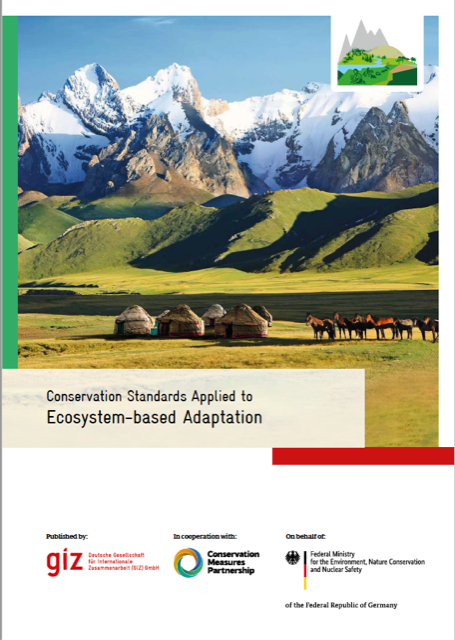 A Conservation Measures Partnership working group, which includes representatives from Foundations of Success and World Wildlife Fund, recently had the opportunity to work with colleagues at the Deutsche Gesellschaft für Internationale Zusammenarbeit GmbH in Central Asia to develop a manual that applies the Conservation Standards to ecosystem-based adaptation.
A Conservation Measures Partnership working group, which includes representatives from Foundations of Success and World Wildlife Fund, recently had the opportunity to work with colleagues at the Deutsche Gesellschaft für Internationale Zusammenarbeit GmbH in Central Asia to develop a manual that applies the Conservation Standards to ecosystem-based adaptation.
The Conservation Standards provide a user-friendly, evidence-based, and consistent approach that, when applied to ecosystem-based adaptation, can help teams (composed of community members and the development and conservation practitioners who assist them) identify priority ecosystems, assess non-climate and climate-related threats, conduct scenario planning, and select the most appropriate interventions to address priority threats under different scenarios.
To meet the specific needs of ecosystem-based adaptation, this guide proposes revisions to Step 1 (Assess) and Step 2 (Plan) of the Conservation Standards. Revisions include identifying ecosystems on which human communities depend, assessing climate vulnerability, setting climate-smart goals, and considering various types of adaptation interventions. Steps 3-5 of the Conservation Standards (Implement, Analyze & Adapt, and Share) remain the same and are only described briefly in this manual.
The guide includes an example project based in the high mountains of Central Asia, but the target audience is the global community of practitioners and the communities with whom they work. Find the manual here.
Story from Marcia Brown (FOS/CCNet Global), John Morrison (WWF/CCNet Global), Tobias Garstecki (Independent Consultant), Adrienne Marvin (FOS), Nicolas Boenisch (FOS Europe/CCNet Europe)
